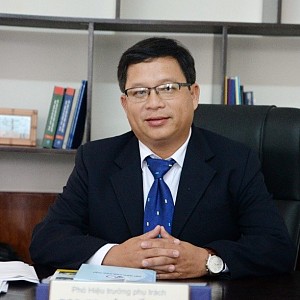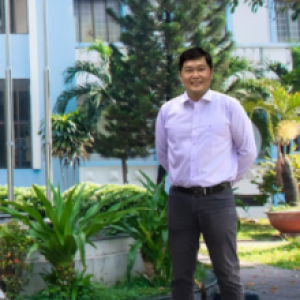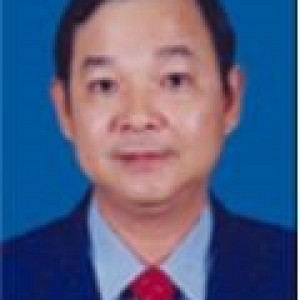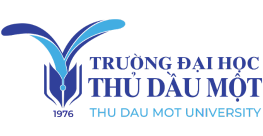Articles
Volume 7 (Issue 3 - 2025)
CASE STUDY: APPLYING INFORMATION TECHNOLOGY IN TEACHING FIRST GRADE MATHEMATICS TO DEVELOP COMPREHENSIVE COMPETENCIES FOR PRIMARY SCHOOL STUDENTS
Chu Thi Ngoc Diep, Tran Thi Yen Giang, Pham Quynh Giang
This study evaluated the effectiveness of Information Technology (IT) applications in teaching Grade 1 mathematics to develop students' comprehensive competencies. Tools such as Canva, Twinkl, and online educational games were integrated into lessons to create an engaging learning environment and to enhance students' skills. Significant improvements were observed: students’ ability to sequence numbers increased from 33% to 83.3%, number comparison skills improved from 31% to 90.5%, and effective teamwork skills rose from 40% to 95.2%. Additionally, self-directed learning levels increased from 24% to 85.7%, and creativity in problem-solving grew from 33% to 80.9%. These results underscore the positive impact of IT in developing primary students' academic and collaborative skills.
IMPROVING THE QUALITY OF LAVABO PRODUCTS AT THIEN THANH BATHWARE COMPANY LIMITED
Pham Truong Huyen Mo, Nguyen Vuong Bang Tam
This study focuses on improving the quality of lavabo basin products at Thien Thanh Bathware Company Limited. by applying quality analysis tools such as process flowcharts, check sheets, Pareto charts, and cause-and-effect diagrams. The analysis identified two major defects affecting product quality: impurities and firing cracks. Based on root cause analysis, the study proposes three groups of solutions: (1) cross-training and standardized operation models to enhance workers’ skills; (2) periodic maintenance plans for the vibrating screen to ensure stable equipment performance; and (3) regular mold maintenance to detect early wear or damage. These solutions aim to improve product quality, reduce defect rates, and increase production efficiency.
OVERVIEW OF SUBMERGED CULTURE AND THE BIOLOGICAL ACTIVITIES OF MEDICINAL MUSHROOM SPECIES
Nguyen Thi Ngoc Nhi, Dang Thanh Trung
Submerged cultivation of medicinal mushrooms is receiving increasing attention and is considered an effective alternative to traditional substrate cultivation methods for producing fungal mycelial biomass and bioactive metabolites with diverse applications. This method allows for the control of culture environment conditions, enabling more efficient synthesis of bioactive compounds such as polysaccharides, triterpenoids, cordycepin, polyphenols, etc. Furthermore, the bioactivity of these compounds, including antioxidant, anticancer, antibacterial, and immunomodulatory effects, further emphasizes the potential of producing medicinal mushroom biomass by submerged cultivation in the pharmaceutical and functional food industries. Submerged cultivation is considered a promising alternative to traditional mushroom fruiting body cultivation because it offers better control over culture conditions and product quality, as well as shorter cultivation times. Submerged fungal cultivation has significant industrial potential; however, there are still challenges in optimizing production yield and scaling up the process for industrial application. The successful application of this method on a commercial scale depends on increasing product yield and developing new production systems to address the issues related to submerged mushroom cultivation techniques. Although many researchers are making efforts to produce bioactive metabolites from fungi, the physiological and technical aspects of submerged cultivation still require extensive and long-term research.
FACTORS AFFECTING THE SATISFACTION OF STUDENTS, LECTURERS FROM THE FACULTY OF TECHNOLOGY AND SUSTAINABLE DEVELOPMENT WITH THE LABORATORY AT THU DAU MOT UNIVERSITY
Manh Tran Dinh, Thi Bich Thao Nguyen, Minh Thuan Nguyen, Thanh Nha Tran
The laboratory can be seen as an environment where students can enhance their skills by transferring theoretical knowledge into practice. The purpose of this study is to evaluate the factors affecting the satisfaction of students and lecturers majoring in Chemistry, Biotechnology, and Food Technology from the Faculty of Technology and Sustainable Development at Thu Dau Mot University. A total of 300 students from freshman to seniors and their lecturer were surveyed using a questionnaire comprising 25 observed variables. The obtained information were subsequently analyzed using Exploratory Factor Analysis (EFA) and linear regression modeling. The results indicated that the proposed model consists of four independent factors (laboratory facilities, service competence, responsiveness, and school support) and one dependent factor (satisfaction), which demonstrated reliability with Cronbach’s Alpha coefficients greater than 0.6 and total variable correlation coefficients above 0.3. The EFA results of 19 accepted observed variables showed correlations among them, with a KMO value of 0.931, a Bartlett’s test significance of 0.000, and a total extracted variance of 70.435%. These 19 observed variables were grouped into four independent factors that correlated with the dependent factor (satisfaction with four observed variables), with sig = 0.000. The linear regression analysis confirmed the appropriateness of the model regarding the observed variables, with no signs of autocorrelation or multicollinearity. The factors influencing the satisfaction of student and lecturer with the laboratory were ranked, in order of importance, as follows: school support (β = 0.683), responsiveness (β = 0.130), and facilities (β = 0.129). All standardized residuals of the observed variables lay on a straight line, indicating that they followed a normal distribution.
PERSULFATE ACTIVATION-INDUCED DEGRADATION OF AQUEOUS METHYL ORANGE CATALYZED BY CuO/MnO2 MIXED METAL OXIDES
Do Huynh Dong Thu, Ngo Minh Hieu, Nguyen Le Bach Diep, Huynh Thi Nha Truc, Le Nguyen Hai Hung, Nguyen Trung Hieu
MnO2 has the advantage of being environmentally friendly and abundant in soil, but its ability to activate persulfate is poor. This study combines MnO2 with CuO into a mixed metal oxide through a one-step reaction to increase the persulfate activation efficiency of the obtained product. These mixed oxides were synthesized by alkalization of a solution containing ions of two metals and then calcined at 300°C. The obtained oxide catalysts were characterized by methods such as FTIR, SEM, BET analysis, and zeta potential. The adsorption and decomposition of methyl orange (MO) were experimentally conducted in batch form using the above mixed metal oxides as adsorbents or persulfate activators. The results showed that the mixed oxides exhibited characteristic peaks in the FTIR spectrum, and were in the form of nanorods (CuO) and amorphous small particles (3:1CuO/MnO2). The CuO catalyst has a specific surface area of 20.23m²/g and pore sizes ranging from 20 to 30Å. The zeta potentials of both CuO and MO were highly negative, e.g., -46.5mV and -24.1mV, respectively. The adsorption capacities of MO onto the mixed oxides were quite low (~13.5%) and decreased gradually as the CuO content decreased. However, the persulfate activation capacity of the mixed oxides for MO decomposition was quite high, e.g., that of 3:1CuO/MnO2 for 40mg/L MO was 74.1%. In addition, the decomposition of MO almost followed pseudo-second-order reaction kinetics.
The manuscript contends that the strengthening of Australia's diplomatic relations with Southeast Asia can be attributed to the escalating threat posed by China's rise, the US's precarious role in the Asia-Pacific landscape, and the increasingly complex economic interconnections between the US, Australia, and Southeast Asia vis-à-vis China. Historically, the strategic alliance with the United States has been the cornerstone of Canberra's foreign policy framework. Nonetheless, Canberra's concerns about Washington's uncertain presence have grown as a result of the ongoing changes in US National Security Policy over the previous decade, from 2016 to 2025. In the long run, it can be argued that the dominant trajectory indicates Canberra's intention to strengthen its comprehensive strategic partnership with Southeast Asia, despite the increased complexity and fragmentation observed within Australia's multicultural society. While some analysts argue that Canberra's strategic alliance with the United States still predisposes it to prioritize the abandonment of Southeast Asia, there is a counterargument that Australia's strategic partnership with Washington is gradually dwindling after over 75 years of establishment and evolution. In light of the aforementioned circumstances, the manuscript advocates for Australia to recalibrate its domestic policies, particularly its ethnic policies concerning the Asian immigrant populace, and to leverage the existing networks of economic and social relationships with Southeast Asian nations, thus cultivating a framework of alliances among middle powers within the region, which would mitigate the risk of becoming ensnared in the strategic rivalry between the US and China in Southeast Asia.
The callus is a disorganized mass of cells that grow in plants in response to various biotic and abiotic stimuli. Callus plays an important role in cell cultures in vitro, as a starting material for many subsequent studies such as single-cell culture, protoplast culture, micropropagation, etc. In this review, callus as well as the factors affecting callus formation and proliferation (plant growth regulator, mineral medium, carbon source, type of explant, light condition, callus line) are explored to provide a brief overview of callus culture
Publication Information
Publisher
Thu Dau Mot University, Viet Nam
Editor-in-Chief

Assoc. Prof. Nguyen Van Hiep
Thu Dau Mot University
Thu Dau Mot University
Editorial Board

Assoc. Prof. Le Tuan Anh
Thu Dau Mot University
Thu Dau Mot University

PhD. Nguyen Quoc Cuong
Thu Dau Mot University
Thu Dau Mot University

PhD. Doan Ngoc Xuan
Thu Dau Mot University
Thu Dau Mot University

PhD. Nguyen Khoa Truong An
Thu Dau Mot University
Thu Dau Mot University

Assoc. Prof. Nguyen Thanh Binh
Thu Dau Mot University
Thu Dau Mot University

PhD. Le Thi Thuy Dung
Thu Dau Mot University
Thu Dau Mot University

PhD. Ngo Hong Diep
Thu Dau Mot University
Thu Dau Mot University

PhD. Nguyen Duc Dat Duc
Ho Chi Minh City University of Industry and Trade
Ho Chi Minh City University of Industry and Trade

Assoc. Prof. Nguyen Van Duc
Animal Husbandry Association of Vietnam
Animal Husbandry Association of Vietnam

PhD. Nguyen Thi Nhat Hang
Department of Education and Training of Binh Duong Province
Department of Education and Training of Binh Duong Province

PhD. Nguyen Thi Cam Le
Vietnam Aviation Academy
Vietnam Aviation Academy

PhD. Trần Hạnh Minh Phương
Thu Dau Mot University
Thu Dau Mot University

M.A. Pham Van Thinh
Thu Dau Mot University
Thu Dau Mot University

PhD. Nguyen Thi Lien Thuong
Thu Dau Mot University
Thu Dau Mot University

Prof. Le Quang Tri
Can Tho University
Can Tho University

Prof. Banh Quoc Tuan
Thu Dau Mot University
Thu Dau Mot University

